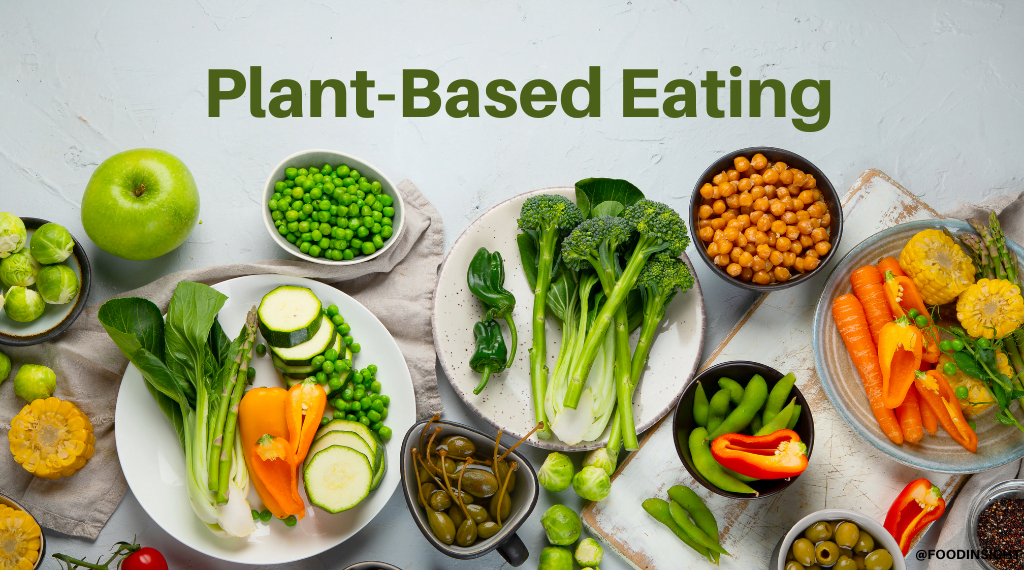
Embracing the Greens: Kickstart Your Journey on a Plant-Based Diet for Improved Health

Picture this: a world where your plate is a kaleidoscope of colors – vibrant greens, deep purples, bright reds, and sunny yellows – all swirling together in a nutritional dance. This is the world of the plant-based diet, a world that has continually drawn attention for its myriad health benefits and sustainability perks. If you’ve been flirting with the idea of adopting a greener approach to eating, you’re embarking on a path that spells out health for both you and the planet. So, how about we dive into the world of plant-based diets and see how you can get started?
What Exactly is a Plant-Based Diet?
First things first, let’s clear up the greenery! A plant-based diet focuses on consuming whole foods that come from plants. This includes not just fruits and vegetables, but also nuts, seeds, oils, whole grains, legumes, and beans. It doesn’t mean you’re necessarily a vegetarian or vegan and never eat meat or dairy. Rather, you’re choosing more of your foods from plant sources.
Why Consider a Plant-Based Diet?
Why are more people turning to plants for sustenance? The reasons are as plentiful as the vegetables in a lush garden. Those who adopt plant-based diets often report increased energy levels, improved digestion, and better weight management. And that’s just the start; such diets are rich in fiber, vitamins, and minerals that help lower blood pressure and reduce the risk of heart disease, type 2 diabetes, and certain cancers.
Getting Your Plate in Plant Shape
Now, let’s get down to the roots. How can you transform your diet to be plant-strong?
Begin with Baby Steps
If you’re making the switch from a diet heavy in animal products, ease into it. Start by including a vegetable side dish with every meal. Gradually, increase the number of plant-based meals throughout the week until you feel comfortable with an all-plant menu.
Discover the Rainbow
There’s more to plants than lettuce and apples. Expand your horizon! Try fruits and vegetables that are out of your norm. Are you friendly with quinoa, farro, or bok choy? If not, now’s the time to introduce yourself. Each color provides different nutrients, so the more variety, the merrier (and healthier) you’ll be.
Plant-Based Proteins are Your Friends
Protein is vital, but it doesn’t have to come from animals. Beans, lentils, chickpeas, tofu, and tempeh are excellent plant-based protein sources and can easily become the stars of your meals.
Keep Things Whole
Choose whole grains over refined ones. Whole wheat bread, brown rice, and whole wheat pasta hold more nutrients and fiber than their white, refined counterparts.
Don’t Forget About Nuts and Seeds
Almonds, chia seeds, flaxseeds, and their crunchy friends pack a punch of healthy fats, proteins, and fibers. Sprinkle them on salads, blend them in smoothies, or enjoy a handful as a snack.
The Dairy Dilemma
Miss milk? No worries. Soy, almond, and oat milk are plant-based alternatives that can smoothly slide into your meals. Just opt for unsweetened versions to cut down on added sugars.
Overcoming Challenges on a Plant-Based Diet
Switching to a plant-based diet is rewarding, but it can come with its set of challenges. Here’s how you can tackle common hurdles:
Navigating Social Situations
Eating out or at a friend’s house might seem tough on this diet. The key is to scan the menu for plant-based options or simply ask the chef to whip up a vegetable dish. And there’s no shame in bringing a plant-based treat to share at a gathering; it might just become the new favorite!
Meal Prep Magic
Making plant-based meals can seem time-consuming. But, with a little meal prep magic, you can save time. Dedicate a few hours over the weekend to cook and store a variety of plants – grains, legumes, veggies – and you’ll be ready to mix and match them throughout the week.
Affordability
Worried about the green costing you too much green? Shopping for plant-based diets doesn’t have to break the bank. Focus on buying seasonal produce and bulk items, and remember that staple crops like rice, beans, and potatoes are typically economical choices.
Meeting Your Nutritional Needs
It’s crucial to ensure that your plant-based diet is well-rounded. Pay attention to nutrients typically abundant in animal products, such as iron, calcium, vitamin B12, and omega-3 fatty acids. You might need to add fortified foods or supplements to your diet to meet your nutritional needs.
Iron
Plant-based sources of iron include legumes, seeds, leafy greens, and whole grains. Pair these with foods rich in vitamin C to boost iron absorption.
Calcium
Leafy greens, almonds, and fortified plant milks can provide calcium. Make sure to include a variety of these sources in your daily intake.
Vitamin B12
Vitamin B12 is typically found in animal products, so you might need a fortified food like cereals or a B12 supplement to meet your daily dose.
Omega-3 Fatty Acids
Flaxseeds, chia seeds, and hemp seeds are excellent plant-based sources of omega-3 fatty acids. Include them in your diet to support brain and heart health.
The Takeaway
Starting a plant-based diet could be one of the most rejuvenating decisions you make for your health. It’s an adventure that requires a bit of planning and flexibility, but the benefits can be life-changing. Remember to take it one step at a time, enjoy discovering new foods, and keep the focus on freshness and variety.
With every plant-based meal, you’re contributing to a healthier body and a more sustainable world. So why not give it a go? Your body – and the Earth – will thank you for it. Happy eating!